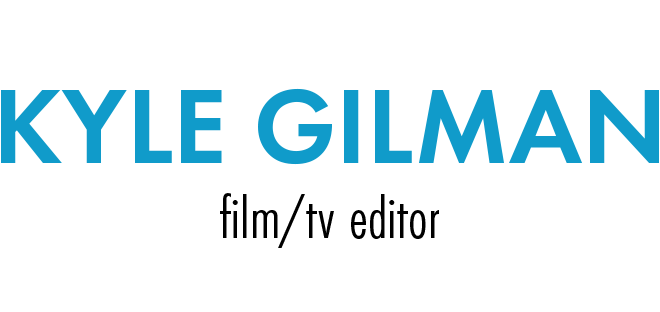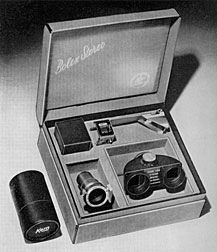About two years ago I wrote a post entitled Why Make Short Films? which has become one of the more popular posts on my blog. A lot has changed in those two years, and I want to write some more about what the average young filmmaker can expect when setting out to make films.
First off, unless you live in Europe, don’t expect anyone to give you money to make a short film. You and your friends will have to do this on your own. And yes, you need friends. You need talented people who will work for less than they’re worth, because you can’t afford to pay strangers the amount of money they deserve.
Keep the costs down as low as you can. Learn all you can about the camera options available. These days you can do amazing stuff with some cheap HD camcorders. Definitely shoot HD. DV is not acceptable. 720p is fine. It’s the default resolution of HD on the web. I used to be able to recommend cameras, but I just can’t keep up with it anymore. A very good Hollywood DP is planning to shoot a portion of a film I’m editing on the Canon EOS 5D Mark II; a DSLR still camera that also shoots HD. You probably can’t afford to pay your crew, but you must buy them meals. Having bagels and coffee on the set in the morning really raises morale, and lunch is essential. If you’re shooting late, order some pizza.
Edit the film yourself. It sounds strange coming from a professional editor, but anyone can edit a movie these days. The only cost should be your time. Again, do your research. If you shot 24p, learn everything about what that means for your workflow before you start shooting, and for God’s sake at least before you start editing. Cut it with whatever you feel comfortable using. I hear iMovie is incredibly full-featured these days, although I can barely make the thing work.
Once you’ve finished the movie, put it out every way you can. Don’t be a dope and hold back your premiere for fancy film festivals. Film festivals are 20th Century relics. Sundance isn’t going to show your short, and even if it is, nobody watches the shorts there unless a famous person is in one of them or was seen near the venue at the time of the screening. Apply to some local festivals, and some bigger names, but applying to every festival you can will cost you way too much money. I spent about $1000 sending Kalesius and Clotho to film festivals. It got me a few awards to put on the DVD box, but never any money.
Put it on YouTube. Get yourself enrolled in their Partner Program. I’m pulling in a few bucks a day with that. Put it on Vuze. It was a strange and unique set of events, but I made over $2000 from Vuze’s pre-roll ads in a single quarter last year. Since then I’ve made about a dollar a day. Try Revver. I made a few bucks from them a year ago, but haven’t seen any since then. Blip.tv supposedly has revenue sharing, but I haven’t seen any hits or cash from them at all. Make a DVD and sell it on your website. You can burn them yourself and print full-color discs with an awesome Epson R280. Or if you want to make less money but spend less time, use Createspace to get them on Amazon. I’ve sold one DVD of my collected short films. Try merchandising. T-shirts are the true heart of our economy. I have sold exactly no t-shirts of my own logo, but other films might lend themselves to catchphrases or funny graphics that fans would like to own.
At this point I have made back the cost of producing Two Night Stand, which I shot 4.5 years ago. Most of the cast and crew didn’t get any money, and I haven’t been paid for all the time I spent writing, directing, and editing the movie. That doesn’t exactly qualify as a raging success, but it’s more than I ever hoped for. The problem I’m having is that there is an insatiable desire out there for more and more content. I could make a lot more money if I continued to put out videos. Unfortunately I just can’t keep up the pace. If you can be prolific you are much more likely to build a steady fanbase who talk about and anticiapte your new films.

 When I graduated from college, my dad and his wife gave me a 16mm Bolex camera from the 1950s. It was a neat gift, but the really unique thing about it was the Stereo Kit that came with it. It was a complete set of stereo lens, projector lens with polarizing filters, and a small silver projection screen. The system works by putting two tall, skinny images side by side on each frame of film. Then when it’s projected, they are offset and overlapped with each one polarized differently, just like a fancy new 3-D movie. Rather than being widescreen though, the image is tall and skinny. Unfortunately in the past I haven’t had the time and money available to get the system going.
When I graduated from college, my dad and his wife gave me a 16mm Bolex camera from the 1950s. It was a neat gift, but the really unique thing about it was the Stereo Kit that came with it. It was a complete set of stereo lens, projector lens with polarizing filters, and a small silver projection screen. The system works by putting two tall, skinny images side by side on each frame of film. Then when it’s projected, they are offset and overlapped with each one polarized differently, just like a fancy new 3-D movie. Rather than being widescreen though, the image is tall and skinny. Unfortunately in the past I haven’t had the time and money available to get the system going.